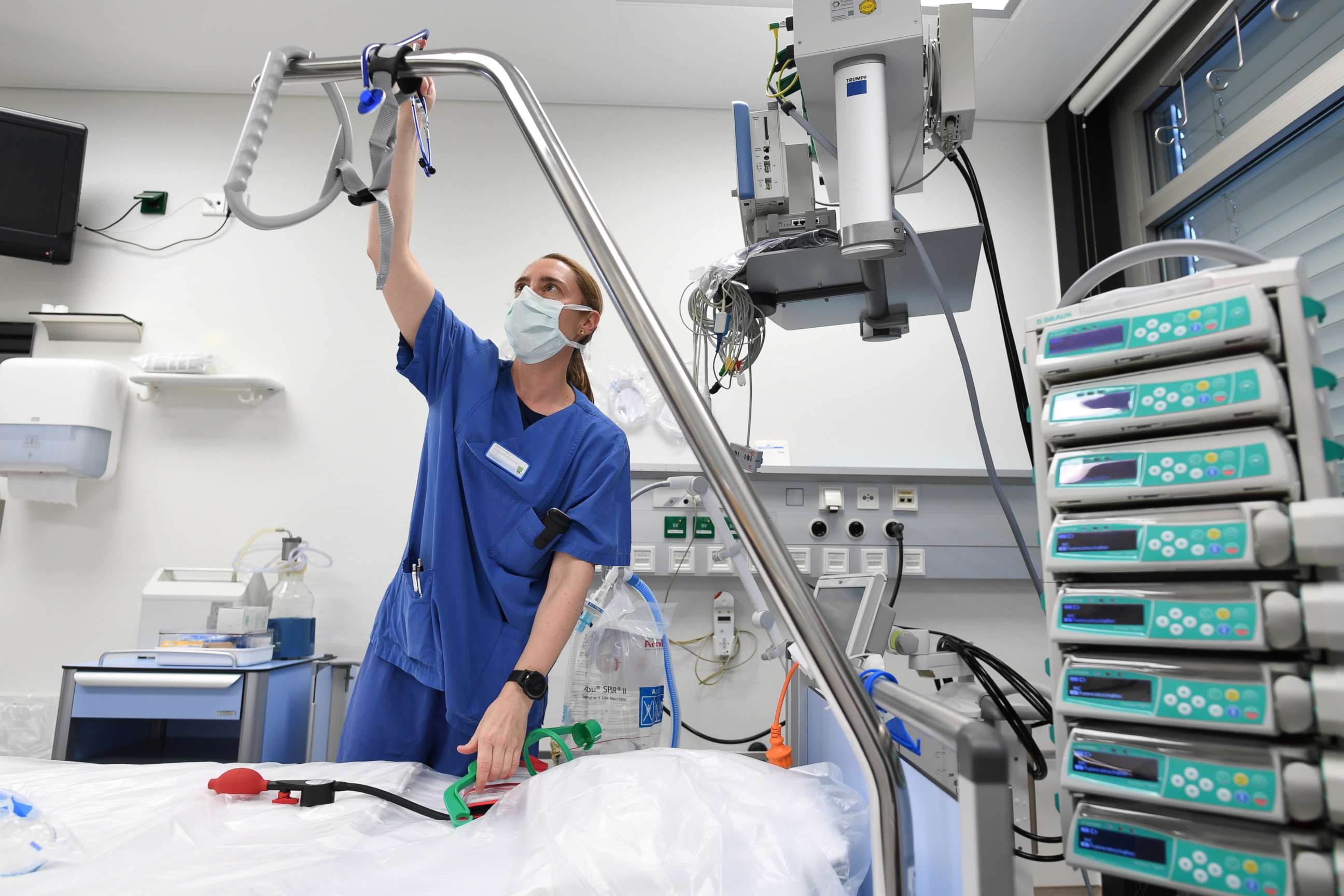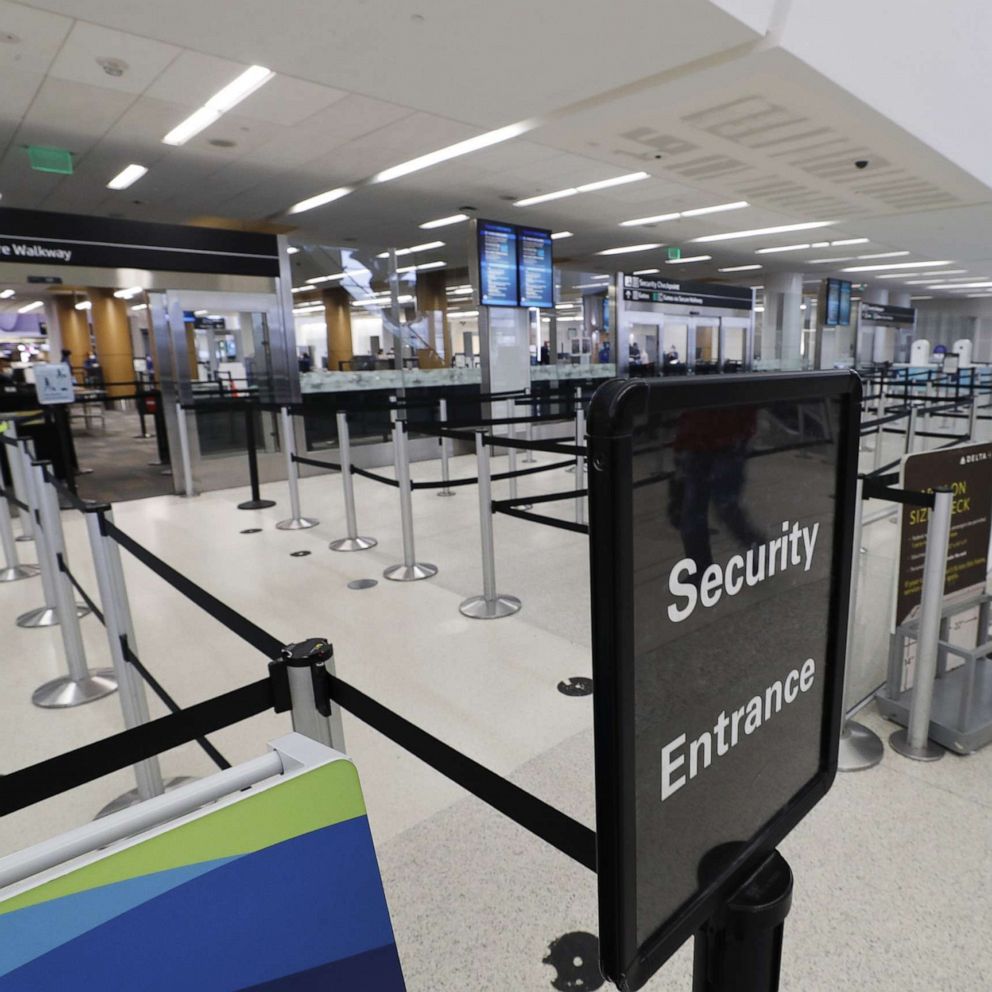Anesthesiologists hailed as special heroes in fight against coronavirus
But the most valuable procedure they perform also puts them in the most danger.
Health care workers across the U.S. have risen to the occasion in combating the coronavirus pandemic. Skilled practitioners place themselves in harm's way to save lives -- but some medical professions face more dangers than others.
Anesthesiologists, in particular, have a vast skill set that makes them extremely valuable to care teams that manage critically ill COVID-19 patients, explains Dr. Yemi Odugbesan, physician anesthesiologist and adjunct professor of anesthesiology at Rocky Vista University College of Osteopathic Medicine.
But the particular procedure they perform that makes them so valuable also puts them in the most danger: intubation.
Because COVID-19 can result in severe respiratory issues, some patients need to be intubated, a lifesaving medical procedure in which doctors force a tube down a patient's throat, opening the airway and allowing patients to be placed on a ventilator.
“The most critically ill COVID-19 patients suffer from acute respiratory distress syndrome [ARDS], a complex inflammatory response that causes the lungs to fill with fluid,” Dr. Odugbesan explains. “The decision to intubate a COVID patient with ARDS is made if the patient rapidly decompensates, doesn't improve on high flow oxygen, starts to exhibit signs of multiorgan failure, or isn't able to sustain their blood pressure.”
Dr. Odugbesan notes that before a breathing tube is inserted, the patient receives a sedating medication, and mechanical ventilation is provided with a bag-mask.

But that's when things can get dangerous. Although the virus that causes COVID-19 isn't normally airborne, it can become "aerosolized" during this process, meaning the virus is kicked up in a fine mist.
“In addition," says Dr. Odugbesan, "once the breathing tube is in place, airway particles can become aerosolized during the brief period of time it takes to connect a patient to the ventilator.”
Throughout the intubation procedure, which generates the highest risk for droplet exposure, an anesthesiologist face is mere inches away from the patient’s mouth.
If that weren’t nerve-wracking enough, anesthesiologists must also deal with the very real possibility that their face may be the last one a patient ever sees. Dr. Odugbesan explains that the mortality rate for COVID-19 patients who require intubation remains as high as 65-85%.
And despite changes in critical care practice that have improved mortality rates, Dr. Odugbesan said, “The prognosis for a COVID patient who experiences ARDS requiring intubation remains extremely poor and expectations for weaning patients off the ventilator are thus quite low.”
These are the concerns that anesthesiologists must address as they prepare for their typical 12-hour shifts. They mitigate their risk as much as possible by donning proper PPE for each intubation -- and because they may not know whether a patient has COVID-19 or not, they must gear up for every surgery as if the patient were COVID-19 positive.
“Members of our group have an extensive routine for donning and doffing PPE that often involves two people,” explains Dr. Odugbesan. They armor themselves in “hazmat suits, shoe covers, eye protection, N95 masks or special respirators, PAPRs (powered air purifying respirators), additional protective gowns, and finally two to three set of gloves.”
The stakes are high as ICUs across the nation are challenged with saving a dizzying number of severely ill patients. Anesthesiologist must multitask, balancing duties in the operating room for emergency surgeries with their responsibilities as critical care physicians.
Thankfully, says Dr. Odugbesan, “we are uniquely trained to treat patients in the fast-paced and ever-changing environment of the OR, which makes us adept at responding to acute situations in the ICU.”
Angela N. Baldwin, MD, MPH is a pathology resident at Montefiore Health System in the Bronx and a contributor to the ABC News Medical Unit.
What to know about the coronavirus:
- How it started and how to protect yourself: Coronavirus explained
- What to do if you have symptoms: Coronavirus symptoms
- Tracking the spread in the U.S. and worldwide: Coronavirus map
Tune into ABC at 1 p.m. ET and ABC News Live at 4 p.m. ET every weekday for special coverage of the novel coronavirus with the full ABC News team, including the latest news, context and analysis.







